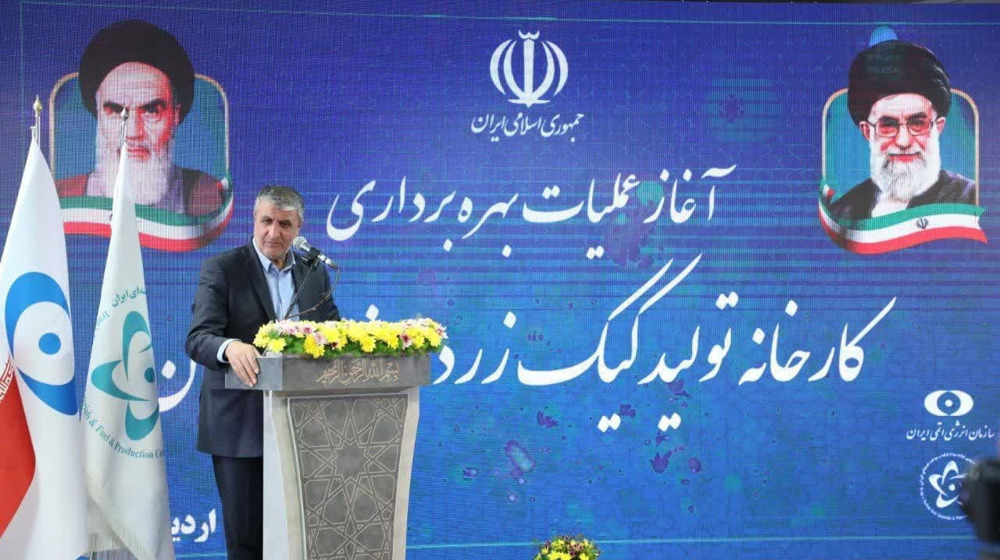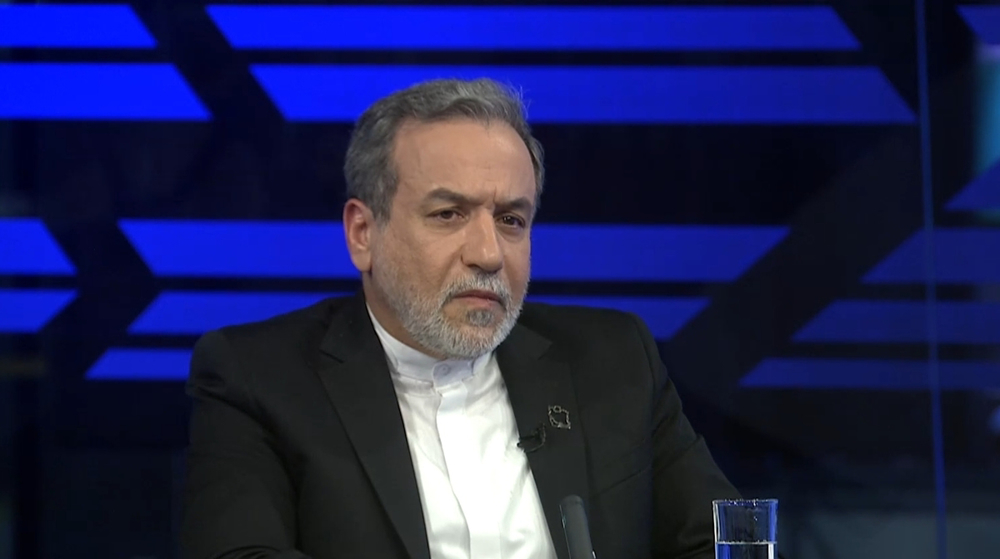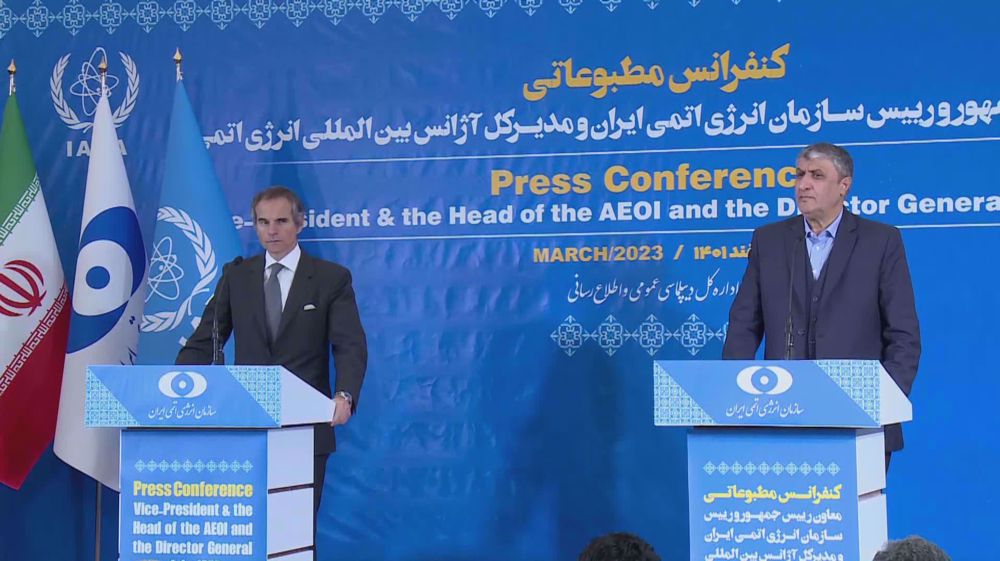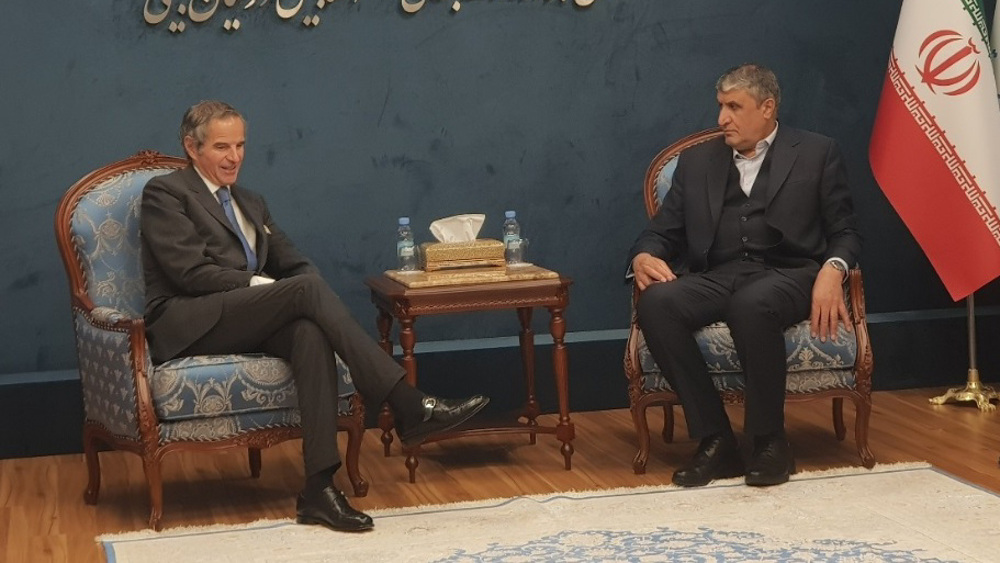Iran to scale up yellowcake production by 50%, will run 10 more uranium mines by year end: AEOI chief
The head of the Atomic Energy Organization of Iran (AEOI) says the Islamic Republic plans to step up the production of yellowcake, which is a type of uranium concentrate powder, by 50 percent, and will also operate 10 uranium mines by the end of the current Iranian calendar year (which concludes on March 20, 2024).
Mohammad Eslami made the remarks on Thursday as he inaugurated the yellowcake production facility in Saghand village in Ardakan County in the central Iranian province of Yazd. Several Iranian nuclear scientists and experts as well as state officials were in attendance during the ceremony.
“Today, we are witnessing the implementation of one of the projects planned within the AEOI's 20-year strategic document. We have utilized heap leaching industrial mining process for the first time,” he said.
“Since uranium reserves could be found across the country, we came to an agreement not to ship low-density uranium ores and radioactives, and process raw materials in origin mines instead,” Eslami noted.
“Our fellow colleagues have managed to produce yellowcake by means of the heap leaching process. The entire process was homegrown, and Iranian scientists developed, engineered and domestically-manufactured relevant equipment by themselves,” the AEOI chief highlighted.
Eslami emphasized that the production of yellowcake in Saghand facility will increase by 50 percent, and this would be the case in other Iranian uranium mines as well.
“We plan to supply the necessary material for generation of nuclear power, and provide nuclear fuel required for the production of various radiopharmaceuticals and other civilian applications,” he said.
“Before 2021, Iran had three uranium mines, of which only two were operating. However, we could spot and utilize five more ones a year later in the provinces of Isfahan and Yazd. We are now running eight mines, and intend to operate another ten by the year end,” Eslami pointed out.
Yellow cake can be processed into enriched uranium to make fuel rods for nuclear power plants.
VIDEO | Thousands evacuated in Ethiopia amid earthquakes, volcanic eruption fears
Revealed: Israeli ministers eye restoration of illegal settlements in Gaza through genocide
How Los Angeles’ pistachio tycoons facilitated and profited from wildfires
Iraqi PM: Iran was in Syria to fight terrorism; presence requested by Damascus
Hamas: Israel's massacre in Jenin camp won’t break resistance
60 bodies recovered from abandoned South African gold mine: Police
Biden administration ‘quietly’ circumnavigating own ban on TikTok: Report
Iran Navy takes delivery of first advanced ‘signals-intelligence’ destroyer


















 This makes it easy to access the Press TV website
This makes it easy to access the Press TV website